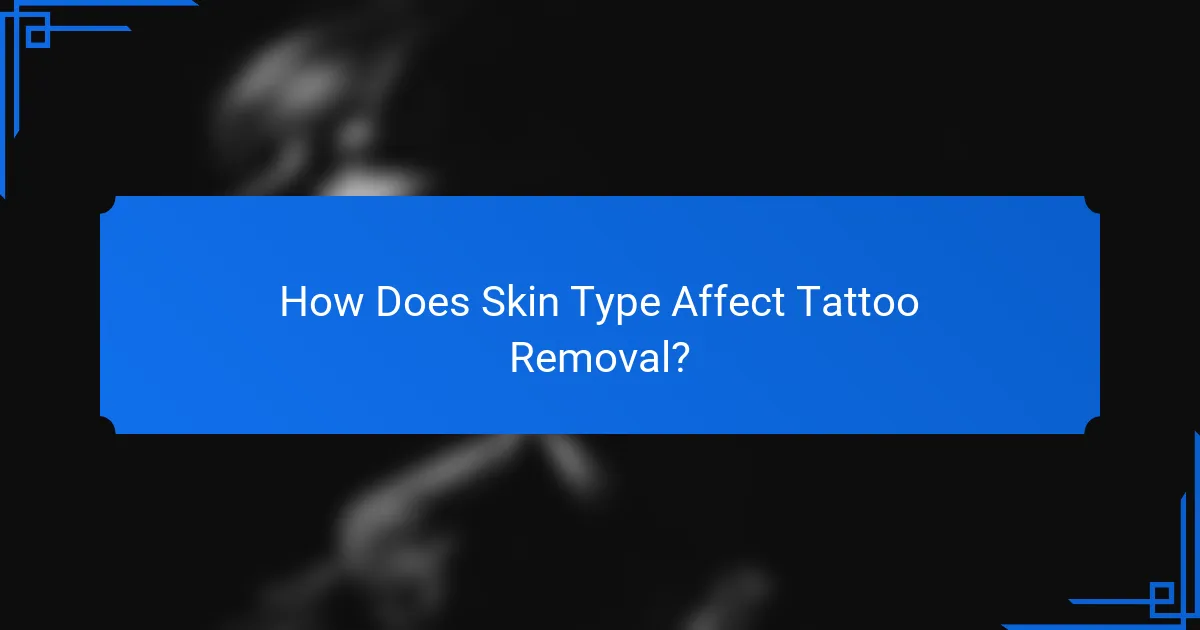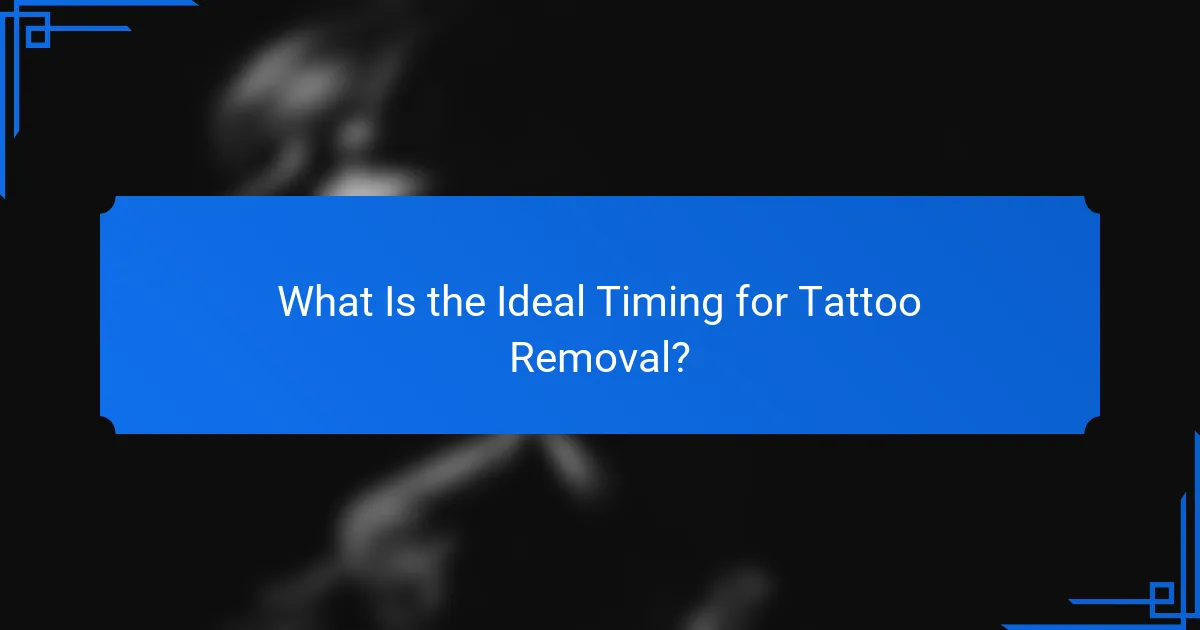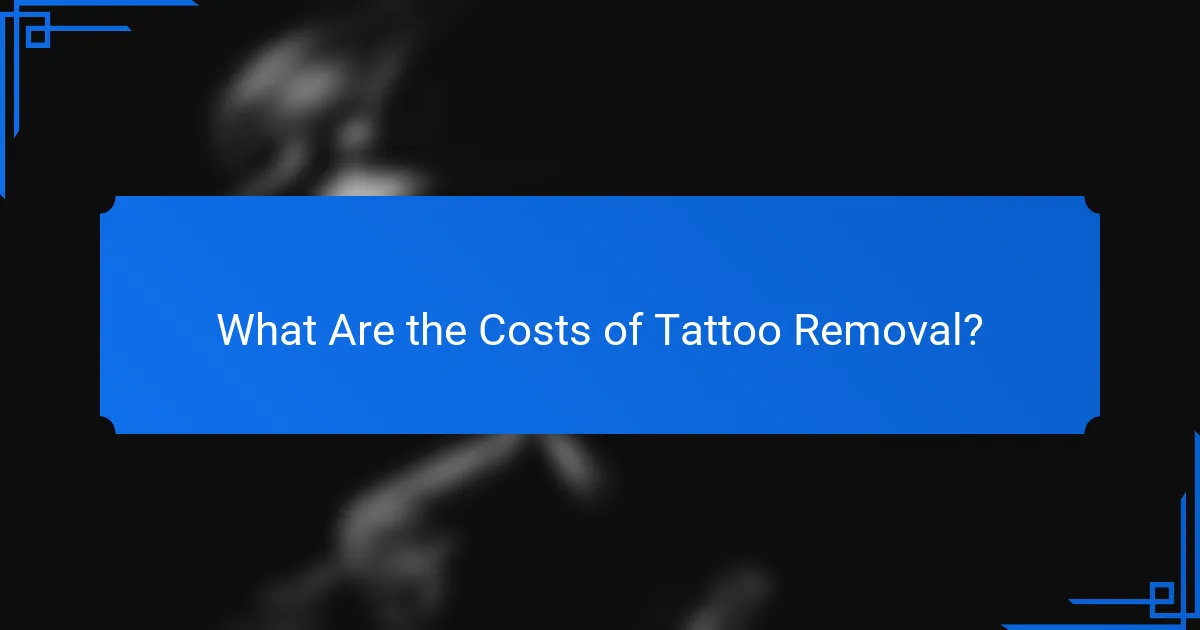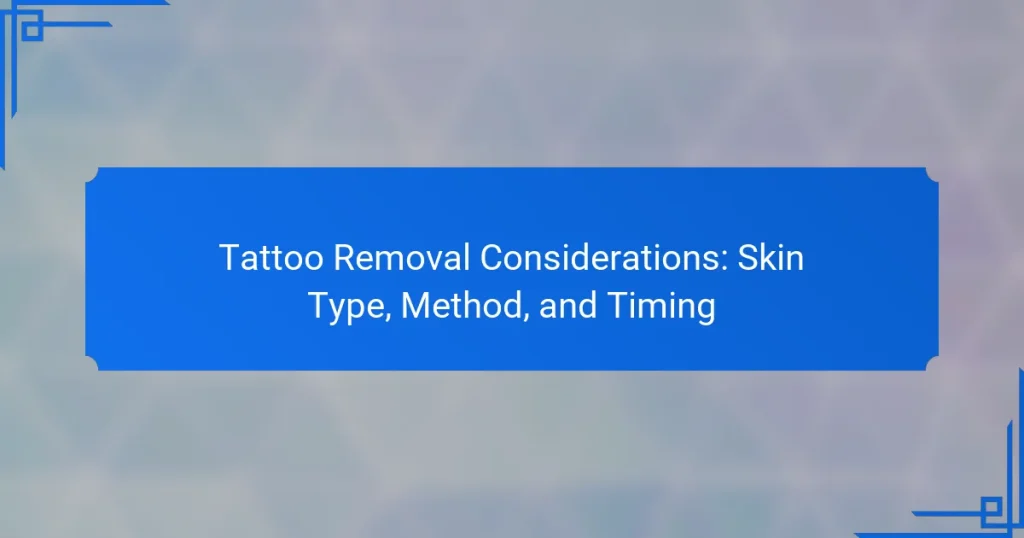When considering tattoo removal, it’s essential to take into account your skin type, the specific characteristics of the tattoo, and your personal preferences. Different methods, such as laser treatments and chemical peels, offer varying benefits and may be more suitable depending on your skin tone and sensitivity. Additionally, timing plays a crucial role in the process, with optimal results often achieved when treatments are scheduled during periods of minimal sun exposure.

What Are the Best Tattoo Removal Methods?
The best tattoo removal methods vary based on skin type, tattoo characteristics, and personal preferences. Common techniques include laser treatments, dermabrasion, chemical peels, excision, and saline removal, each with unique benefits and considerations.
Laser Tattoo Removal
Laser tattoo removal is the most popular and effective method for many individuals. It works by using concentrated light beams to break down the ink particles in the skin, allowing the body to gradually absorb and eliminate them.
Considerations include the number of sessions required, which can range from several to over ten, depending on the tattoo’s size and color. Side effects may include temporary redness and swelling, so proper aftercare is essential.
Dermabrasion
Dermabrasion involves physically sanding the skin to remove the outer layers where the tattoo ink resides. This method can be effective but may require local anesthesia and a longer recovery time compared to laser treatments.
It’s crucial to consult a professional to assess skin type and tattoo depth, as this method may not be suitable for all skin tones or ink types. Potential risks include scarring and changes in skin texture.
Chemical Peels
Chemical peels use acidic solutions to exfoliate the skin and fade the tattoo. This method can be less invasive than dermabrasion but may require multiple applications for optimal results.
Different strengths of chemical peels are available, and a professional can help determine the right type based on skin sensitivity and tattoo characteristics. Be aware of potential side effects like irritation or discoloration.
Excision
Excision involves surgically removing the tattooed skin, which is then stitched closed. This method is most suitable for small tattoos and offers immediate results.
However, it leaves a scar and may not be ideal for larger tattoos. Recovery time can vary, and proper wound care is necessary to prevent infection.
Saline Tattoo Removal
Saline tattoo removal uses a saline solution injected into the skin to draw out the ink. This method is often considered a gentler alternative to laser removal and can be effective for certain ink types.
While it may require multiple sessions, saline removal is less likely to cause scarring compared to excision. It’s essential to consult with a trained professional to determine if this method is suitable for your tattoo and skin type.

How Does Skin Type Affect Tattoo Removal?
Skin type significantly influences the effectiveness and safety of tattoo removal. Factors such as skin tone, sensitivity, and healing capacity can affect the choice of removal method and the overall results.
Skin Tone Considerations
Skin tone plays a crucial role in tattoo removal, particularly with laser treatments. Lighter skin tones generally respond better to laser removal because the contrast between the ink and the skin allows for more effective targeting of the tattoo pigment. Darker skin tones may require specialized lasers to minimize the risk of hyperpigmentation or scarring.
When considering tattoo removal, individuals with darker skin should consult with a professional who has experience with various skin types to ensure the chosen method is safe and effective.
Skin Sensitivity Factors
Individuals with sensitive skin may experience more discomfort during tattoo removal procedures. Sensitivity can lead to increased pain, swelling, and a longer recovery time. It’s essential to discuss any skin conditions or sensitivities with the practitioner before starting the removal process.
For those with sensitive skin, topical anesthetics or cooling techniques may be recommended to minimize discomfort during treatment. Always follow post-treatment care instructions to reduce the risk of irritation.
Healing Time Variations
Healing time after tattoo removal can vary based on skin type and the method used. Generally, lighter skin types may heal faster than darker skin types, which can take longer to recover due to increased melanin production during the healing process.
On average, healing can take anywhere from a few days to several weeks, depending on the individual’s skin and the removal technique. It’s important to allow adequate time for healing between sessions to achieve the best results and avoid complications.

What Is the Ideal Timing for Tattoo Removal?
The ideal timing for tattoo removal depends on various factors, including skin type, the method of removal, and the season. Generally, it’s best to plan treatments when your skin is less exposed to sunlight, as UV rays can affect healing and results.
Best Seasons for Treatment
The best seasons for tattoo removal are typically fall and winter. During these months, skin is less likely to be tanned or sunburned, which can improve healing and reduce complications. Additionally, cooler weather allows for better recovery, as you can avoid sweating and sun exposure more easily.
Spring can also be a viable option, but ensure you’re prepared for sun protection as the weather warms up. Avoid summer treatments if possible, as increased sun exposure can hinder the healing process and affect the final results.
Timing After Initial Tattoo
It’s advisable to wait at least 6 to 8 weeks after getting a tattoo before considering removal. This waiting period allows the skin to heal properly and ensures that the tattoo has settled. Attempting removal too soon can lead to complications and may not yield effective results.
For tattoos that are older, the timing can be more flexible, but it’s still essential to assess the skin’s condition and consult with a professional before proceeding.
Frequency of Sessions
The frequency of tattoo removal sessions typically ranges from 6 to 8 weeks apart. This interval allows your skin to recover fully between treatments and helps to minimize side effects. Following this schedule can enhance the effectiveness of each session.
Some individuals may require more or fewer sessions depending on factors like tattoo size, ink type, and skin response. Always consult with a licensed practitioner to determine the best plan for your specific situation.

What Are the Costs of Tattoo Removal?
The costs of tattoo removal can vary significantly based on several factors, including the method used, the size of the tattoo, and the location of the treatment. Generally, individuals can expect to pay anywhere from a few hundred to several thousand dollars for complete removal.
Average Price Range
The average price for tattoo removal typically ranges from about $200 to $500 per session, depending on the tattoo’s size and complexity. Complete removal often requires multiple sessions, which can lead to total costs between $1,000 and $4,000 or more. For larger tattoos, prices may increase significantly.
Factors Influencing Cost
Several factors influence the overall cost of tattoo removal. The method chosen, such as laser removal, surgical excision, or dermabrasion, plays a crucial role in pricing. Additionally, the tattoo’s size, color, and age, as well as the practitioner’s experience and geographic location, can all affect the final cost.
For instance, laser removal is often the most common and effective method, but it may also be the most expensive. Conversely, surgical excision can be less costly but may not be suitable for all tattoos, especially larger ones.
Insurance Coverage Options
In most cases, tattoo removal is considered a cosmetic procedure and is not covered by health insurance. However, there are exceptions where removal may be covered if the tattoo is associated with a medical condition or trauma. It’s advisable to check with your insurance provider to understand specific coverage options.
Some clinics may offer financing plans or payment options to help manage the costs. Always inquire about potential discounts for multiple sessions or package deals when considering tattoo removal.

What Are the Risks and Side Effects?
Tattoo removal carries several risks and side effects that can vary based on skin type, removal method, and individual health factors. Understanding these potential issues is crucial for anyone considering this procedure.
Potential Scarring
One of the most significant risks of tattoo removal is scarring. Depending on the method used, such as laser removal or surgical excision, the likelihood of scarring can differ. Laser treatments generally have a lower risk of scarring compared to surgical options, but individual skin types can affect healing.
To minimize scarring, follow post-treatment care instructions carefully, including keeping the area clean and moisturized. Avoiding sun exposure during the healing process can also help reduce the risk of visible scars.
Allergic Reactions
Allergic reactions can occur during tattoo removal, particularly if the skin is sensitive or if certain chemicals are used in the process. Symptoms may include redness, swelling, or itching at the treatment site. It’s essential to inform your practitioner of any known allergies before starting treatment.
If you experience an allergic reaction, contact your healthcare provider immediately. They may recommend antihistamines or topical treatments to alleviate symptoms and prevent further complications.
Infection Risks
Infection is another potential risk associated with tattoo removal. Open skin from the removal process can become a gateway for bacteria, leading to infections if not properly cared for. Maintaining cleanliness and following aftercare guidelines is vital to reduce this risk.
Signs of infection include increased redness, swelling, pus, or fever. If any of these symptoms develop, seek medical attention promptly to address the issue and prevent further complications.


